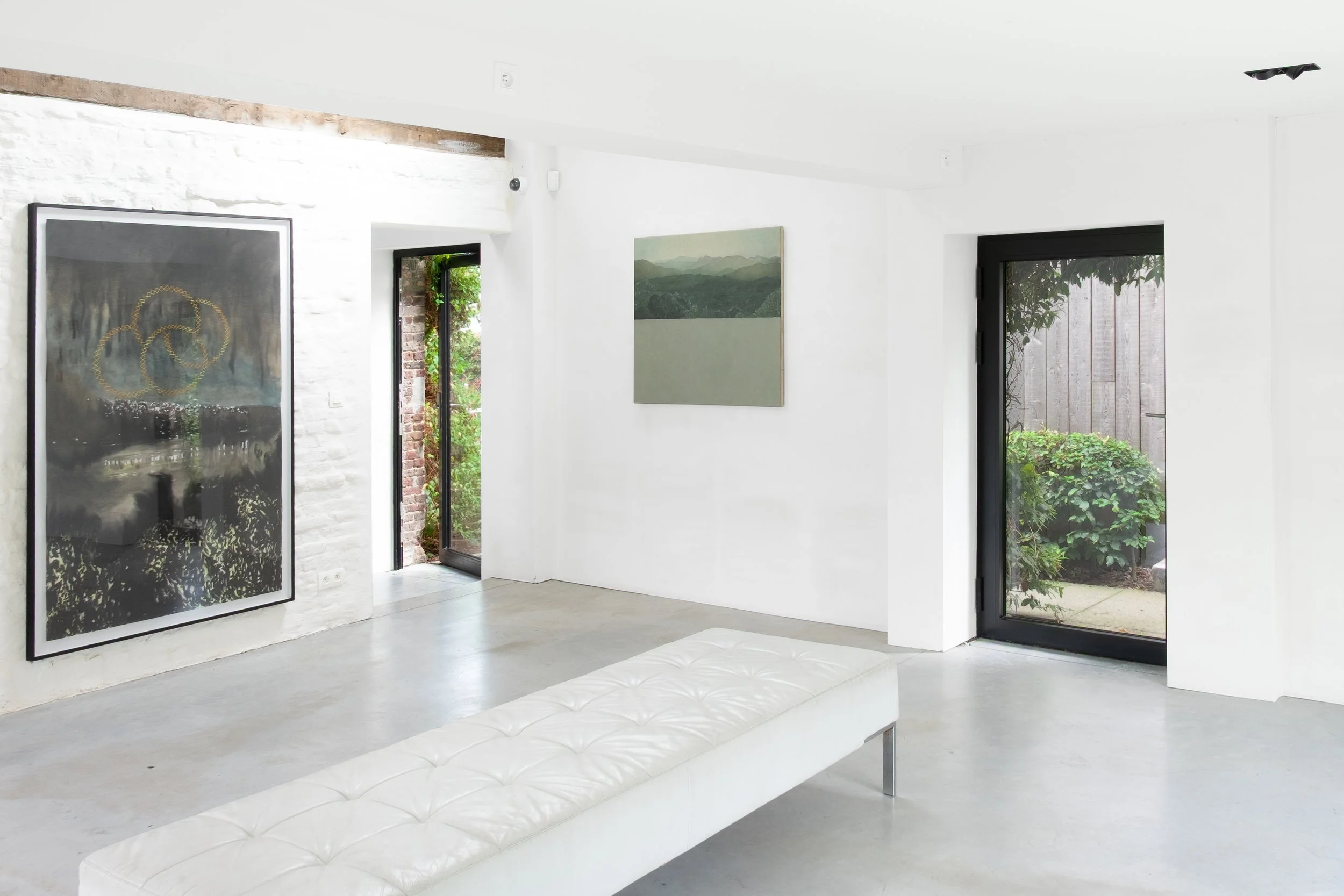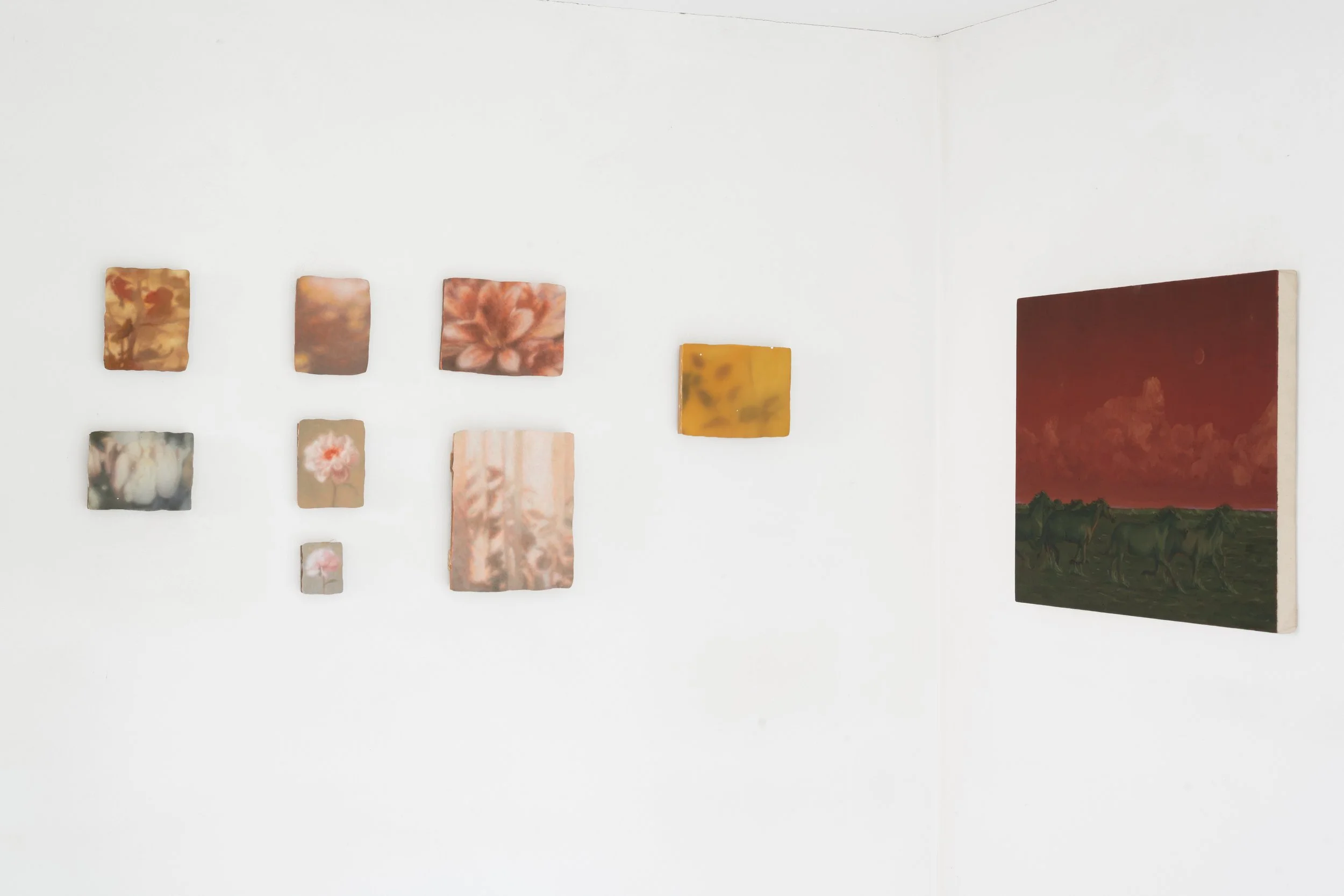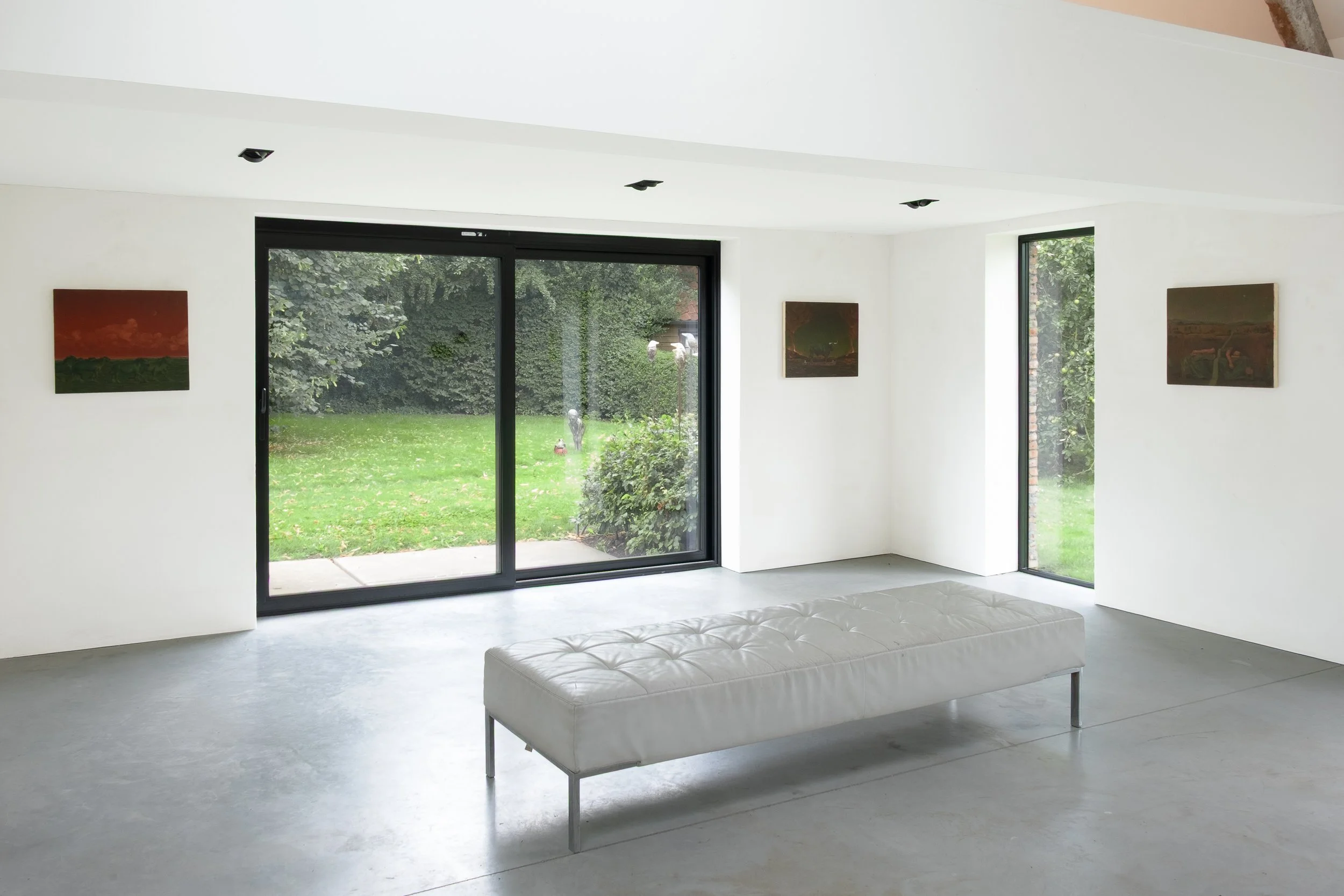The World Ahead —
Visions from the Global South
What the Land Remembers
Maria Abaddon, Julia Aragão, Manuel Chavajay, Raúl Cordero, Diango Hernández, Alberto Lamback, Tania Marmolejo, Harumi Ōri, Thales Pomb, Aryane Siebra and Paulo Valeriano
19 July — 21 September, 2025
Pavilion 3
Press release
(EN) In this space, artists from Latin America, Africa, and Asia come together around a shared ground: the remembering earth. The title What the Land Remembers refers to a deeper consciousness that dwells in landscapes, materials, and bodies. The works reveal how natural and cultural traces—from colonization to migration, from spirituality to resistance—become tangible through image and texture.
Maria Abaddon (°1988, Peru) works with wool and soap in felting technique. Her textile figures are monuments to corporeality and resistance.
Julia Aragão (°1997, Brazil) expresses the ethereal, the melancholic, and the mystical aspects of everyday life in her painterly practice, which is deeply influenced by the Barbizon School and the Impressionists.
Manuel Chavajay (°1982, Guatemala) creates paintings rooted in Maya heritage, combining oral tradition, spirituality, and community.
Raúl Cordero (°1971, Cuba) presents Blue in Green, referencing the jazz piece by Miles Davis. His paintings merge past and present into quiet stories that linger in the surroundings.
Diango Hernández (°1970, Cuba) approaches the portrait as an animated landscape in which he seeks to capture not the outward appearance, but the inner presence and transience of the human being.
Alberto Lamback (°1985, Brazil) paints rhythmic, organic compositions where nature and pattern flow together. His work is sensory and spiritually connected to the tropical environment.
Tania Marmolejo (°1975, Dominican Republic/Sweden) shows monumental portraits of women with enlarged eyes: simultaneously present and elusive.
Harumi Ōri (°1966, Japan) presents tranquil human figures. With a meditative approach, she invites viewers to reflect on the wonder of the ordinary and the preciousness of ‘being’.
Thales Pomb (°1989, Brazil) explores the boundaries between the real and the imaginary, the material and the spiritual, with his work closely connected to the Cerrado biome and the emotional memories of his region of origin.
Aryane Siebra (°1999, Brazil) paints landscapes as moments of calm and contemplation, with nature taking center stage. The artist seeks to depict beauty and invites us to return to the present moment and observe attentively — a movement she considers a political act.
Paulo Valeriano (°1999, Brazil) sees painting as a way to detach a moment from time and reinsert it into a new reality, with the horizon line in his works marking the boundary between memory and imagination.
(NL) In deze ruimte ontmoeten kunstenaars uit Latijns-Amerika, Afrika en Azië elkaar rond een gedeeld terrein: de herinnerende aarde. De titel What the Land Remembers verwijst naar een dieper bewustzijn dat in landschappen, materialen en lichamen schuilt. De werken tonen hoe natuurlijke en culturele sporen — van kolonisatie tot migratie, van spiritualiteit tot verzet – tastbaar worden via beeld en textuur.
Maria Abaddon (°1988, Peru) werkt met wol en zeep in een viltechniek. Haar textiele figuren zijn monumenten van lichamelijkheid en verzet.
Julia Aragão (°1997, Brazilië) brengt het etherische, het melancholische en het mystieke van het alledaagse leven tot uiting in haar schilderkunstige uitwerking, die diep beïnvloed is door de School van Barbizon en de impressionisten.
Manuel Chavajay (°1982, Guatemala) brengt schilderijen geworteld in Maya-erfgoed, waarin orale traditie, spiritualiteit en gemeenschap samenkomen.
Raúl Cordero (°1971, Cuba) presenteert Blue in Green, een werk dat verwijst naar het gelijknamige jazznummer van Miles Davis. In zijn schilderijen vloeien verleden en heden samen tot stille verhalen die in de omgeving blijven hangen.
Diango Hernández (°1970, Cuba) benadert het portret als een bezield landschap waarin hij niet het uiterlijk, maar de innerlijke aanwezigheid en tijdelijkheid van de mens tracht vast te leggen.
Alberto Lamback (°1985, Brazilië) schildert ritmische, organische composities waarin natuur en patroon samenvloeien. Zijn werk is zintuiglijk en spiritueel verbonden met de tropische omgeving.
Tania Marmolejo (°1975, Dominicaanse Republiek/Zweden) toont monumentale portretten van vrouwen met uitvergrote ogen: tegelijk aanwezig en ongrijpbaar.
Harumi Ōri (°1966, Japan) presenteert verstilde menselijke figuren. Met een meditatieve benadering nodigt ze de toeschouwer uit stil te staan bij het bijzondere van het gewone en het kostbare van het ‘zijn’.
Thales Pomb (°1989, Brazilië) verdiept zich in de grenzen tussen het reële en het imaginaire, het materiële en het spirituele, waarbij zijn werk nauw verbonden is met het Cerrado-biome en de emotionele herinneringen aan zijn geboortestreek.
Aryane Siebra (°1999, Brazilië) schildert landschappen als momenten van rust en contemplatie, waarbij de natuur de hoofdrol speelt. De kunstenaar wil schoonheid uitbeelden en nodigt ons uit om terug te keren naar het huidige moment en aandachtig te observeren — een beweging die zij beschouwt als een politieke daad.
Paulo Valeriano (°1999, Brazilië) ziet schilderen als een manier om een moment los te maken uit de tijd en opnieuw te plaatsen binnen een nieuwe werkelijkheid, waarbij de horizonlijn in zijn werken de grens vormt tussen herinnering en verbeelding.







